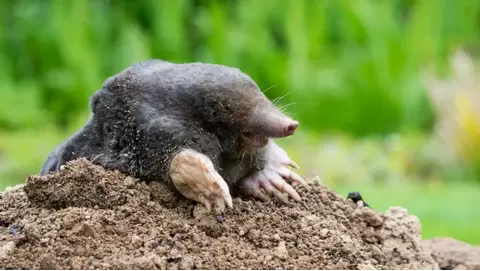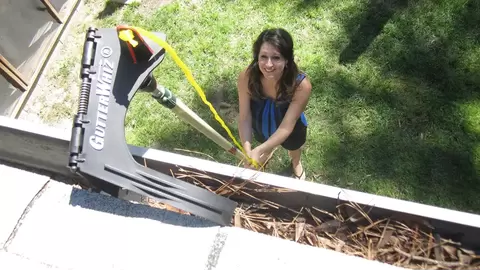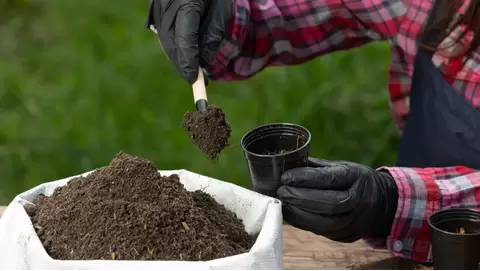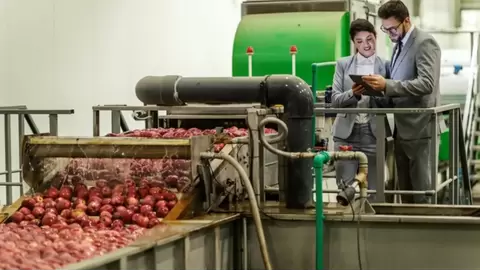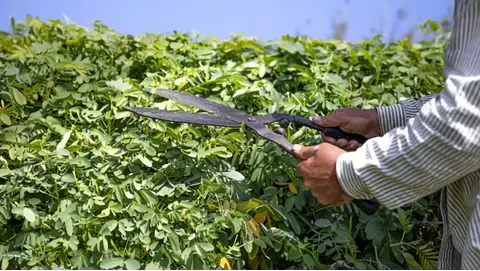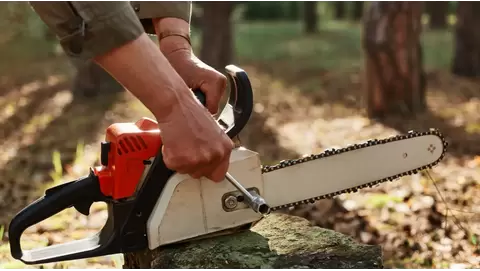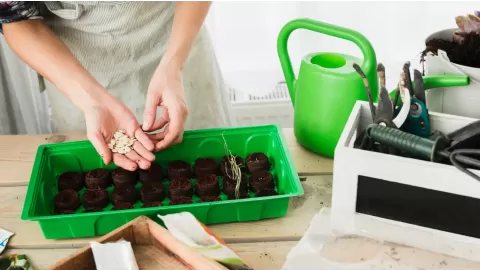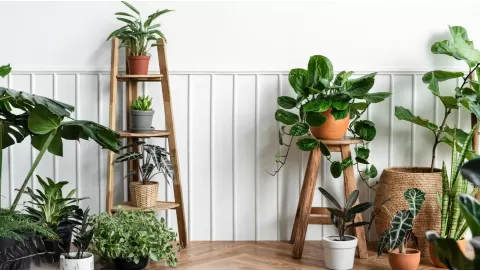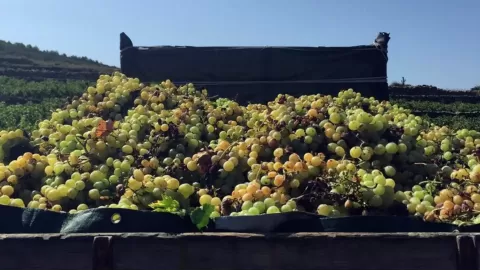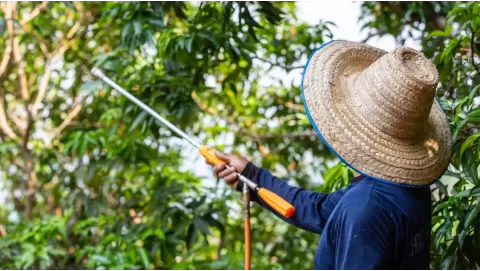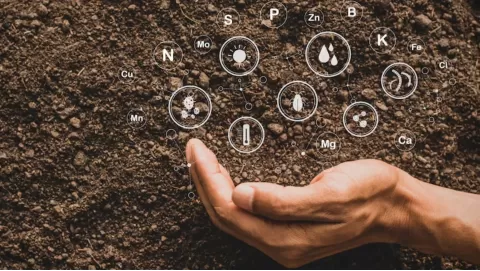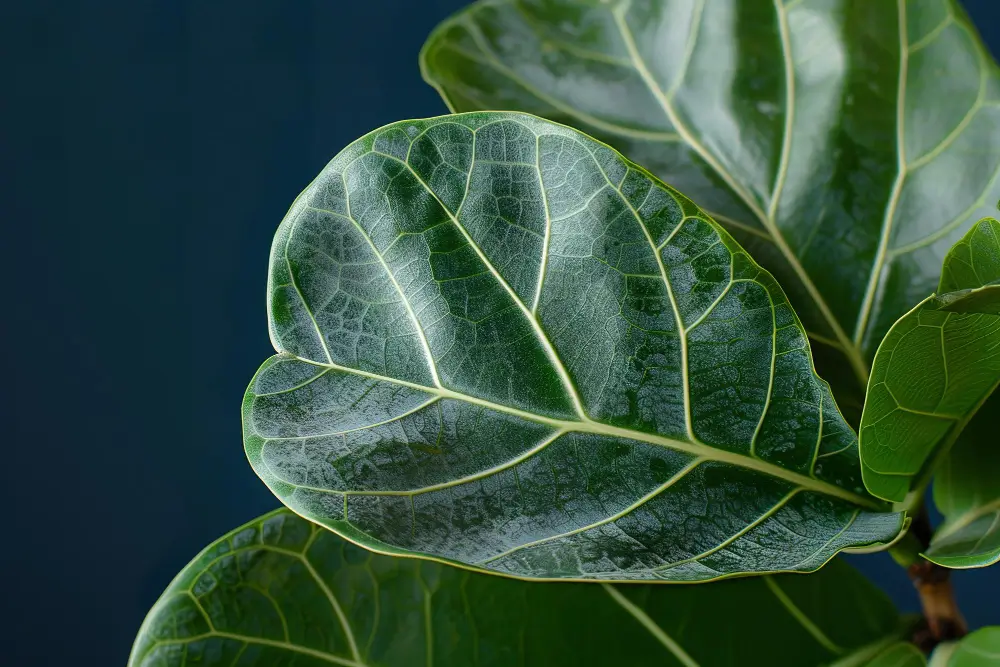
Fiddle Leaf Fig care: Tips for a healthy ficus lyrata
The very attractive Fiddle Leaf Fig (Ficus Lyrata) originated from the tropical lowlands of western Africa. It is a member of the Moraceae family, which includes figs and mulberries. Fiddle Leaf is so named because of its large leaves shaped like violins, giving it a nice look in any room.
Its leaves aren’t always recognizable, but that’s part of its intrigue. This plant, in contrast to many others, whose leaves do not change once they have fully grown, has some different leaf forms, which makes it interesting to watch, while it grows.
But ensuring the Fiddle Leaf Fig’s continued health can be somewhat high-maintenance. This breed behaves like other figs and tends to slumber when it gets cold. However with minimal patience and care, this plant will thrive beautifully and express the stunning foliage that a tropical area would bring into one’s home.
Learning proper care techniques is key to keeping Fiddle Leaf Fig healthy. Growcycle offers a wide selection of gardening products, from soil mixes to care tools, designed to grow Fiddle Leaf Fig into a thriving indoor plant.
Key Features of Fiddle Leaf Fig
Here are some Fiddle description and a few types of care and tips:
- Size and Growth
When grown outdoors in its native habitat, the fiddle leaf fig can reach 600 inches in height, a very large tree. Indoors, however, it grows up to about 120 inches tall, though some reach a bit taller with good care. So long as you keep up with regular pruning it is not hard to manager and maintain shape.
- Light and Soil Preferences
Ideal for part shade with bright indirect light. It prefers loamy, well-drained soil with a pH of 6 -7. Too much water can lead to drowned roots and root rot. Keep the medium moist, with enough water for the plant but not too much.
- Flowering and Hardiness
Even though it’s not known for its flowers, the Fiddle Leaf Fig actually does flower, but only in its native habitat. Its fruiting flowers are insignificant and are only rarely seen outside of tropical areas. This plant thrives best in hardiness zones 10-12, which means that it is suitable for warm and tropical climates. However, it does well indoors as long as it is away from extreme cold or heat.
- Toxicity Warning
A Fiddle Leaf Fig is poisonous to both pets and humans if ingested. The sap of this plant has chemicals that can irritate skin, or worse, so it’s best kept out of the way of curious toddlers or mouthy pets who investigate things orally.
Essential Care Tips to Grow Fiddle Leaf Fig
The following is a list of care essentials which make it easy for plant enthusiasts to coax Fiddle Leaf Fig into healthy growth:
- Light
The Fiddle Leaf Fig is a tropical lowland species that is found in Western Africa, and thrives in a warm, light shower, climate. To recreate this indoors, the Fiddle Leaf Fig requires bright indirect light with some direct sun for a portion of the day.
Near a bright window is a good spot for it, that way the plant will get all the sunlight it needs, but it won’t be too far away from the window, where light won’t be accessible.
This plant also relies on sunlight to produce food through a process called photosynthesis. Because of its large leaves, it requires more light than other indoor plants. When it doesn’t receive enough sun, it demonstrates stress through drooping leaves. Letting in the right amount of light is not just important for growth but the health of the plant.
- Watering
The Fiddle Leaf Fig should be watered well and given the proper light and temperature. As a general rule of thumb, it needs a drink every 1-2 weeks depending on the light that the space gets and the warmth of the room.
To keep the soil moist but not too moist (leading to water-logged soil), pour about a quarter to a third the pot volume while watering. Let the soil dry out thoroughly after watering before watering again. Please remember that with bright light comes more water whereas with low light comes less water.
In either case, the color of the leaves is an indication of whether the plant is under or over-watered. Overwater if the leaves are yellow and soggy; if they’re dry and curly, it’s time to water. Watering your Fiddle Leaf Fig properly is key to keeping it healthy.
- Temperature and Humidity
It does very well indoors If Fiddle Leaf Fig loved getting exposed to fairly constant temperatures of 60°F to 85°F, and anything within the same temperature range would suffice to keep this plant full of health and color.
Besides temperature, it is also humidity that must be taken into account. Optimal humidity levels for these plants are between 30%—65%. Since indoor air is usually dry, especially in winter, it may help to raise humidity around the plant. A good way to do the last two is by using a humidifier to introduce moisture into the air.
- Fertilizers
Fiddle Leaf Figs need to be fed in order to grow and thrive. Fertilizing your plant all at once monthly with a high nitrogen fertilizer will promote robust leaf growth and colorful foliage.
Use water-soluble pellets or liquid fertilizers for indoor plants to get the most benefit. pinterest Special Fiddle Leaf Figs formulas also supply them with sufficient nutrients. These are water-soluble fertilizers that are easy to use and can be mixed with water.
Its green leaves when fertilizers are used in the spring and summer growing season can be readily seen to display its rapid growth. But you might not want to overdo the manure, because it can lead to the build up of minerals in the soil, which will end up damaging the plant.
- Pruning
Another integral task for the plant care is pruning (trimming) to keep it healthy and formed. Never prune during the fall, winter, or early spring as the plant is not active and healthy healing of new growth will not occur as quickly. Clean cuts with sharp hand pruners should made at a 45 degree angle on the leaf node. This does not damage plants’ stems or trunk.
If you prefer your Fiddle Leaf Fig to look more tree-like with a branched canopy wait until it’s 60 inches tall. At this point, prune above a leaf node on the major stem to encourage branch formation in future periods. Pruning will also encourage its horizontal growth by keeping extra branches trimmed to make it full.
Growers can also prune to train by plucking dead leaves or cutting damaged ones. Dead leaves can be gently tugged away and where leaves have turned brown or crispy edges can be trimmed off. Keep the shape accurate while trimming so that it flows into the natural shape of a leaf.
Related: Propagating Pothos: Simple methods for growing new plants from cuttings
Techniques to Grow a Thriving Ficus Lyrata
Caring for a healthy Ficus Lyrata by following some tips which you can find below:
Propagation in Water
For Ficus Lyrata propagation in water, gardeners will need a pair of sharp garden shears, rooting hormone (if using) and a clear glass jar.
- Start by removing a healthy stem with at least three leaves from the Fiddle Leaf Fig plant. Trim 45 degrees above the node to promote more roots.
- Strip the cutting of its lower leaves so that only one or two are left on the stem, to keep the leaves from touching the soil or water during propagation.
- Place it in some room temperature tap water and look through a glass container. Make sure nodes are underwater while foliage goes up from the water line. If the cutting has big leaves, pinch them in half to focus growth on the root system.
- The container should be kept in a warm place with plenty of bright indirect light because direct sun can burn the cutting. Replace the water weekly, and keep it fresh all the way. You will begin to see roots in about two to three weeks.
- By the time they’re 1-2 inches long, transfer the cutting to another pot with fresh earth. Give it a good drink of water and place it where it can get some bright, indirect light in order to grow into its next stage.
Propagation in Soil
Gather and prepare the materials for propagating Fiddle Leaf Figs in soil. Some of the things required include pruning shears, rooting hormones, and a pot with well-drained planting soil. Choosing pots with drainage holes of at least 6 inches in diameter is essential, as it ensures sufficient water movement.
- Begin by taking a healthy cutting from a Fiddle Leaf Fig plant. Also be sure the cutting has three nodes at which the leaves can grow. Strip bottom leaves from the cuttings in order to prevent the base of the cuttings from contacting the ground after planting.
- You can dip the end of a cut branch in rooting hormone as a motivation for new roots to grow. Put the prepared cuttings in pots of firm potting medium so that they do not topple in the pots.
- The root development can be induced by growers when moisten the container with a see-through bag or plastic humidifier. There is some preparing they must do at this point, including finding a warm indoor spot in the house out of the direct sun, which can damage the plants.
- Let it sit for a week or so, then gently tug on the stem to see if it has developed roots. If there is any resistance felt when pulling the stem, that means there are some roots starting to form.
- Once growers see a strong root system outgrowing in all directions, they should remove the plastic cover and care for the plant like an adult plant.
Potting and Repotting Process
Proper potting and repotting are important to keeping a Fiddle Leaf Fig healthy and thriving. Young plants will need to be repotted each spring.
- Choose a pot that is 2 inches wider than the current one. The added space will also provide enough space for the roots to grow and consequently promote even more plant growth.
- If repotting, gently remove the plant form it's pot. Growers should grip the base of the plant when doing this to avoid harming the roots.
- Put the plant into a fresh new pot and add fresh soil mix. Ensure the soil is evenly spread and the plant is centered.
- For older Fiddle Leaf Figs that have grown so large they’re cumbersome to repot, growers can refresh tired soil instead. During each spring season, take out 2 or 3 inches of the top soil level inside the container, then refill the container with fresh potting mixtures. This will serve to replace the leached out nutrients and provide improved growing medium for the plant’s roots.
Growcycle provides various first-grade quality mixes for planting alongside containers to meet all the needs of caring for this kind of tree.
Benefits and Uses of Fiddle Leaf Fig Plant
There are a lot of reasons to recommend a Fiddle leaf fig plant, and that is why it has become a popular plant for both your home or office. The plant is beautiful and due to this factor, it is mostly used as a houseplant to add some natural ambiance to your rooms. With its big glossy leaves, it can add to any room's decor.
- Air Purification and Oxygen Production
One of the most positive aspects of Fiddle Leaf Fig, is that it actually helps to clean the air. As with most other indoor plants, this one removes harmful pollutants by providing fresh air in the form of oxygen. This is to say that it does more than look good, and is a necessity for a healthy environment of a person that wants both home and workplace.
- Connection to Nature and Stress Reduction
Wherever we live, in urban areas where nature can sometimes seem a world away or by the seashore, Fiddle Leaf Fig can fill the gulf. These bonds have been shown to lower stress and enhance overall well-being, so they are great for homes and offices where peaceful calm really matters. Its soothing stroke can transform even sterile spaces into something that seems balanced or inviting.
- Therapeutic Benefits
Doting over a Fiddle Leaf Fig can be likened to therapy. Besides relieving stress, by literally taking care of the plant (for example, by giving it water), one can practice mindfulness, further contributing to mental well-being.
Common Problems and Solutions of Fiddle Leaf Fig
For the most part, Fiddle Leaf Figs thrive in different environments. But there are still a few issues this plant can encounter. It is important to resolve solutions to these issues as soon as they can rise in order to maintain their ability to breathe and function as necessary.
- Bleached Leaves
Bleached leaves can be seen as light brown or pale dots on the upper surface of the leaves. This occurs when there is too much direct sun and it is also know as leaf scorch or leaf sunburn.
To correct this issue, move the plant to a spot with filtered bright light, like near a window with morning sun. Gardeners should avoid setting it in direct sunlight as this will only exacerbate the issue.
- Brown Spots on Leaves
Mostly dark brown spots or browning edges on Fiddle Leaf Fig’s leaves signal root rot that is usually caused by too much watering or when one places the plant pot in stagnated water.
Discard any leaves that are heavily spotted, then repot into fresh, well-draining soil. Control the watering needs by allowing the soil to dry out between watering periods and avoiding it from standing in water.
- Yellowing Leaves
Yellow new leaves could be due to bacterial infection If you have new leaves turning yellow on your Fiddle Leaf Fig plant, it could be bacterial infection, which may be difficult to manage. If your grove, shrubs, or bushes have become infected, start first by cutting out all affected foliage.
Follow up by placing the infected plant in a newly potted container that’s filled with clean, fresh soil to reduce the risk for reinfection. Also keep the infected plant separate from other surrounding plants so the bacteria doesn’t spread via touch to other plants around it.
- Pests and Diseases
Pests such as spider mites, scale infestation and fungal diseases may sometimes attack Fiddle Leaf Figs. The leaves of this plant are large and unique, which makes it easy to notice when something is wrong.
Watch for pests; spots or dark patches on the leaves or white webbing are sure signs. These body language signs point to spider mites or scale insects looting the Fiddle Leaf Fig pant. When growers see any of these signs, they need to spray the leaves with neem or horticultural oil as directed on the product where these insects will be off.
If the infection is marked by unusual spots or molds, treating with the fungicide can cure and prevent the fungal infection. In the meantime, if the problem persists in spite of the effort made, you should swear by pesticides that deal with even the most stubborn infestations.
FAQ’s
What is the lifespan of a Fiddle Leaf Fig?
Young plants can mature in as little as 15 years indoors! Houseplants typically have a lifespan of 25 to 50 years but a well-cared for healthy plant will live longer.
Is it possible to grow a Fiddle Leaf Fig outdoors?
Fiddle Leaf Fig trees can grow outdoors but only in areas with tropical climates like the one they are originally from. The best living conditions for them are hot and damp, like their natural habitat.
Is a Fiddle Leaf Fig toxic to pets?
Yes, Fiddle Leaf Figs are toxic to cats and dogs. The plant has a white sap that contains calcium oxalate crystals, which can irritate a pet’s mouth, throat, stomach and intestines if it is ingested or if it touches their body.
The Bottom Line
When it comes to taking care of a Fiddle Leaf Fig, you want to know how to meet and fulfill their specific needs if you wish to keep them healthy and full of life. By giving the plant adequate light, water and the right temperature and humidity, owners can develop a strong, lush growing plant with luxurious leaves.
Regular pruning, meticulous propagation and prompt repotting are also vital to make the plant thrive in all its glory. Inspect these plants occasionally for pests or diseases that may be prevalent so they don't develop into serious problems.
Visit Growcycle to explore all the products, tools, and supplies required to grow this essential and useful plant indoors or outdoors. Growers will find all this equipment, from moisture gauges to plant fertilizers, to simplify the gardening experience!
Disclaimer: This material is for informational purposes only and should not be relied on for legal, medical, financial, or any other form of professional advice.


